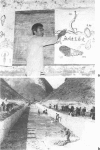Abstract
Reported are the results of a study of the political economy, management, and costs of the successful Guangxi schistosomiasis eradication programme, spanning 40 years from 1953 to 1992. For this purpose we analysed all government data and memoranda on the policy, management, technical support, finance, and the control strategy of the programme. We also interviewed many local staff involved in the programme over the 40-year period and obtained cost data from annual county-level records on seven major categories of variable costs. Schistosomiasis control in Guangxi began with one of the first examples of community participation and rapid assessment in public health history--the use of pre-franked envelopes to return disease questionnaires and suspect snails from rural areas. This approach quickly and accurately delineated the endemic area. This was Mao Zedong's "mass line", incorporating ideas and knowledge from peasants directly into services run for and by them, here the schistosomiasis control programme. Recognition by China's leaders that schistosomiasis was a great economic burden, steadfast prioritizing of the programme over 40 years, local innovative scientific study, agricultural and environmental focus on eradicating the snail hosts and boosting rural production, and mass community education and support were all key factors in the final success. Local leaders motivated programme staff and everyone involved knew the objectives. The programme was always multisectoral, with policy developed centrally, and strategy and collaboration encouraged and rewarded at the grass-roots. These features explain how a very poor autonomous region such as Guangxi finally eradicated schistosomiasis, spending less than US$ 0.50 per protected citizen per year; it is remarkable that the disease and snails were initially found across a large area of complex environments and modern drugs such as praziquantel were not available for most of the 40-year period. The lessons from Guangxi can be adapted elsewhere and should encourage other areas to control endemic schistosomiasis using methods devised to suit the local culture and geography.
Full text
PDF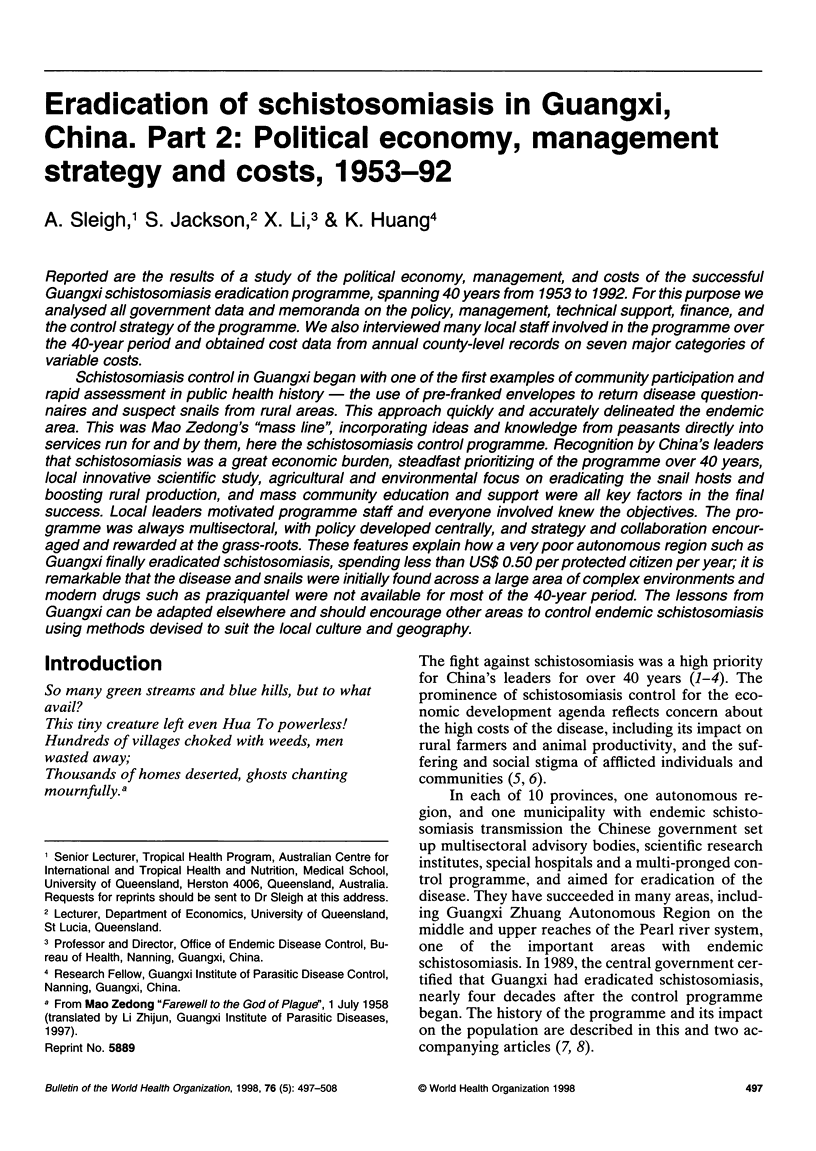
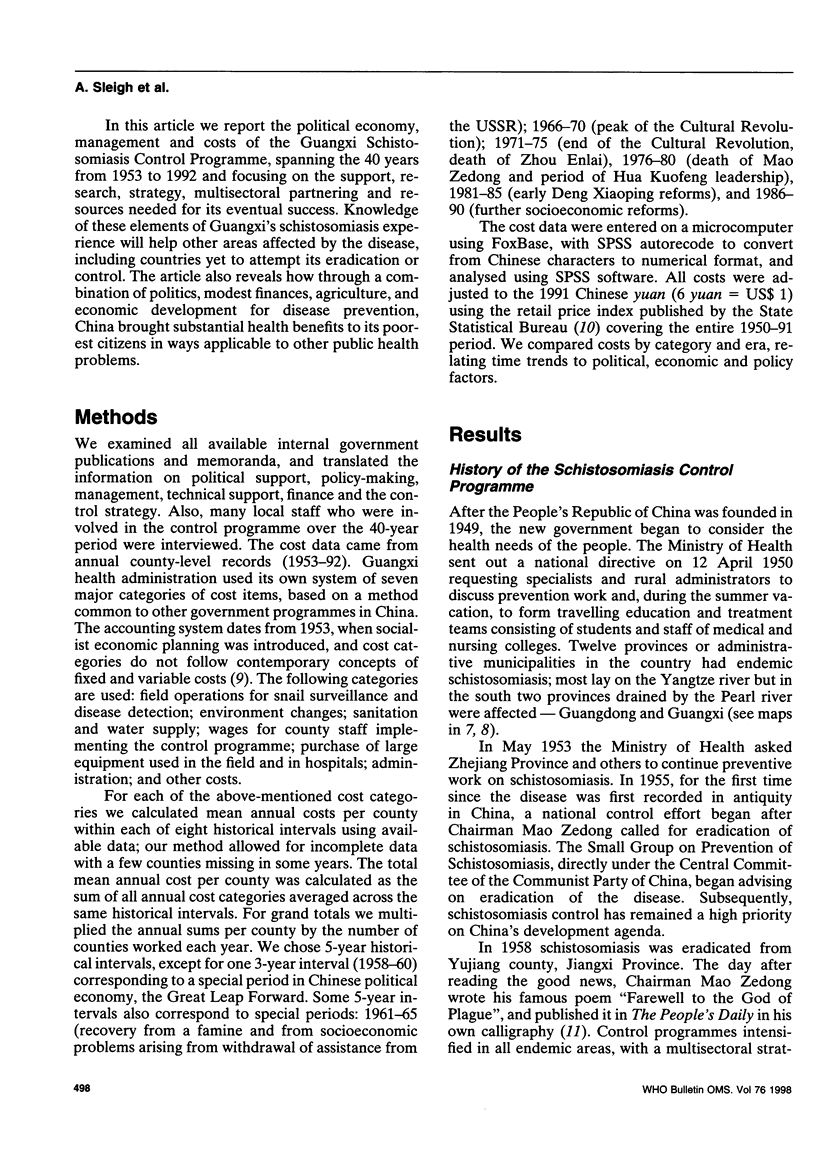
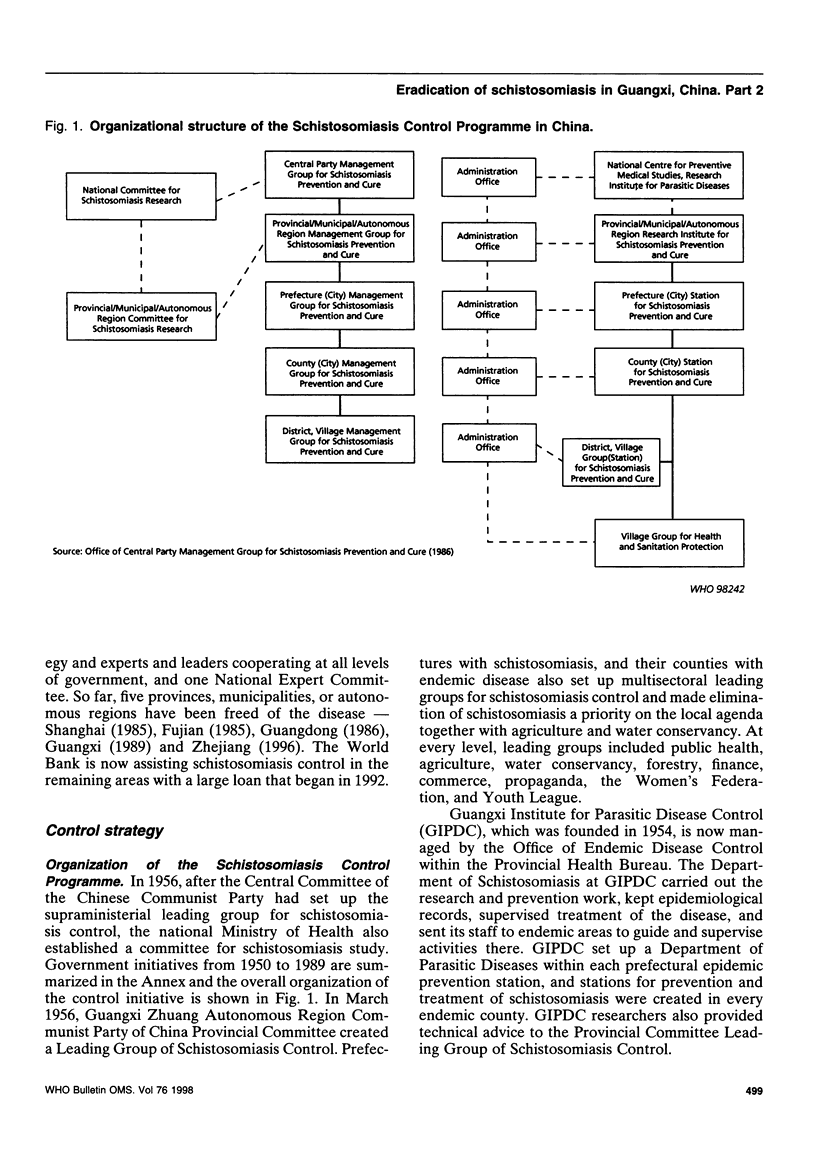
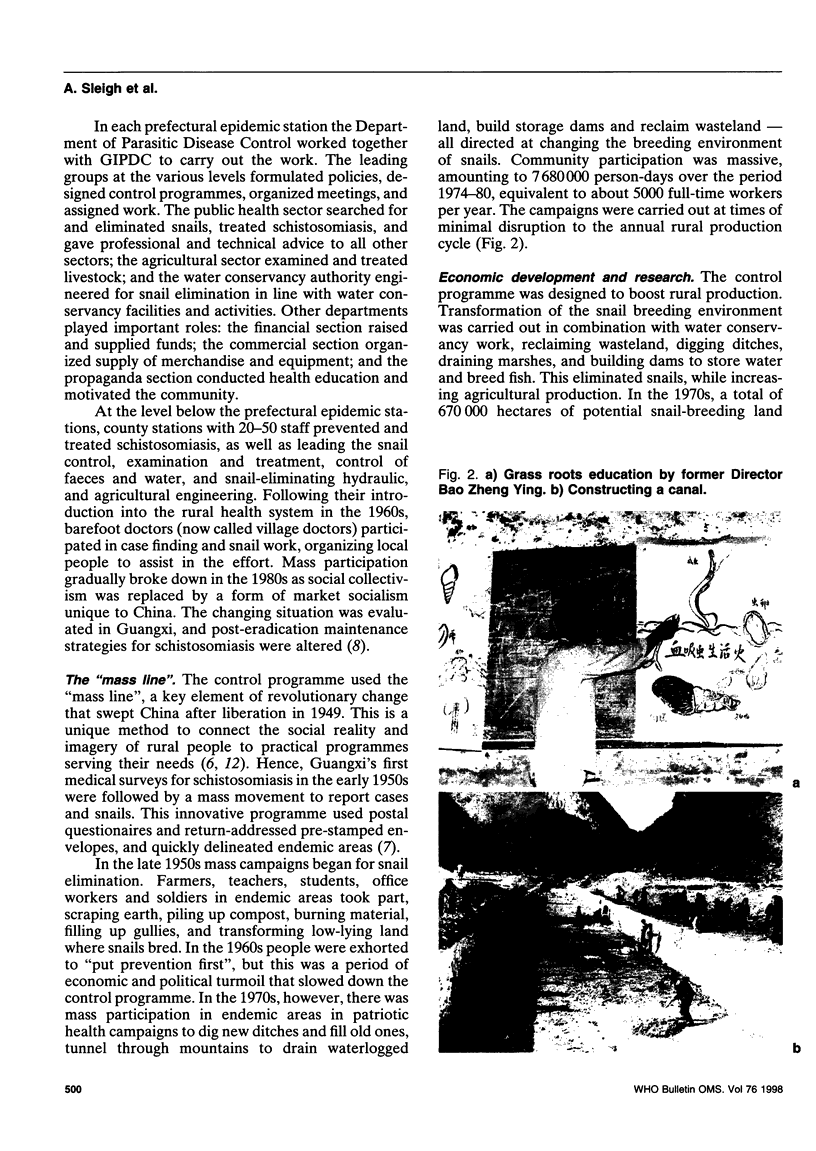
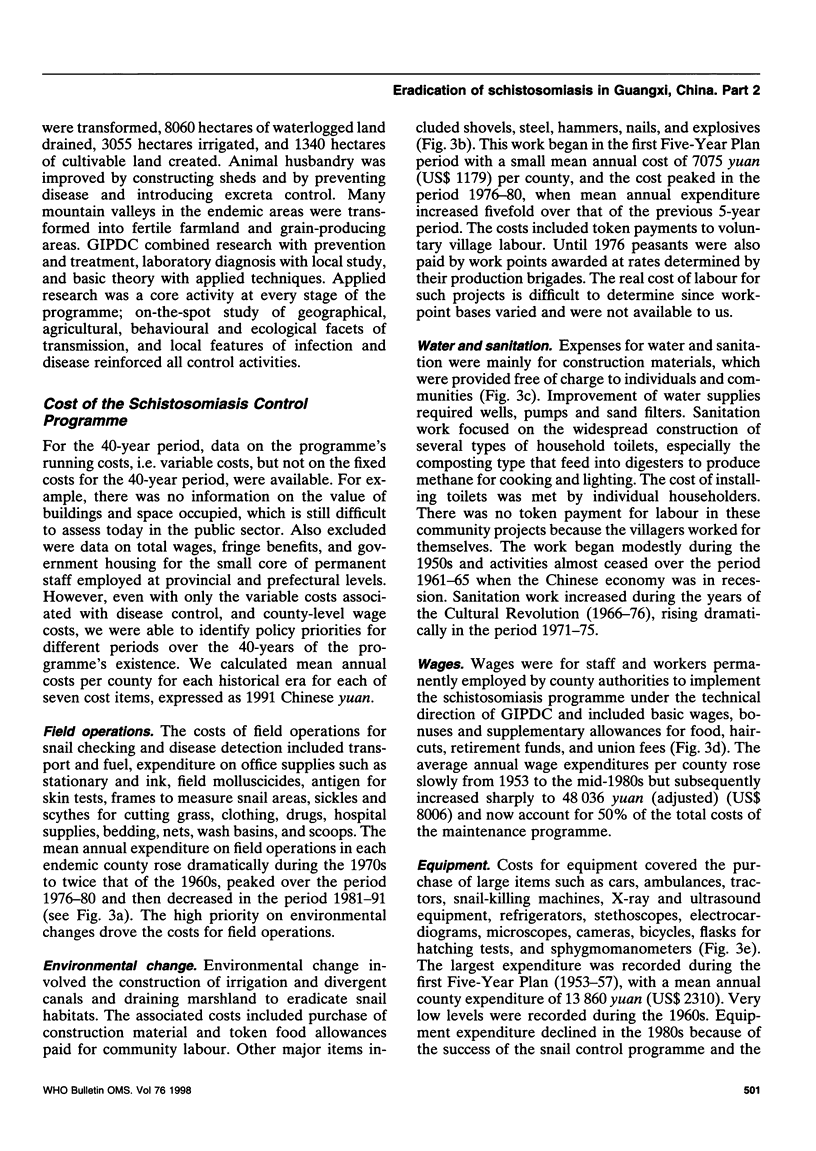
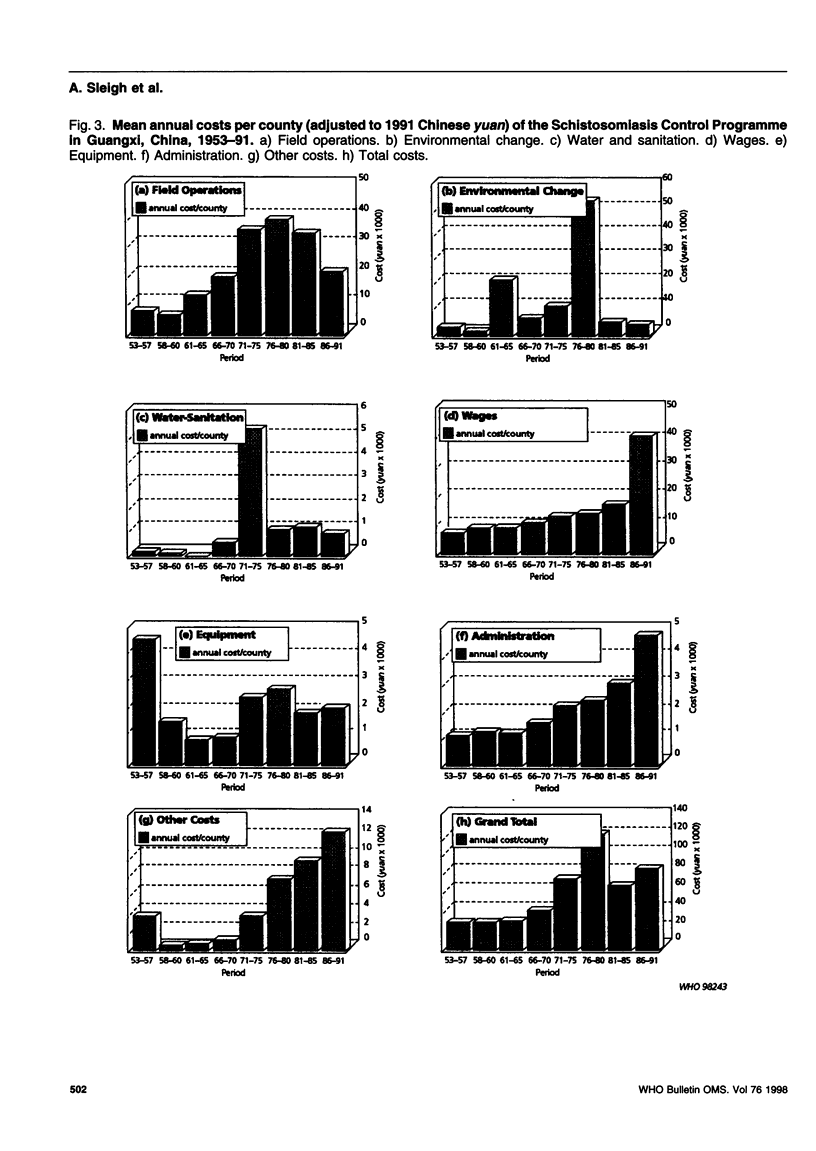
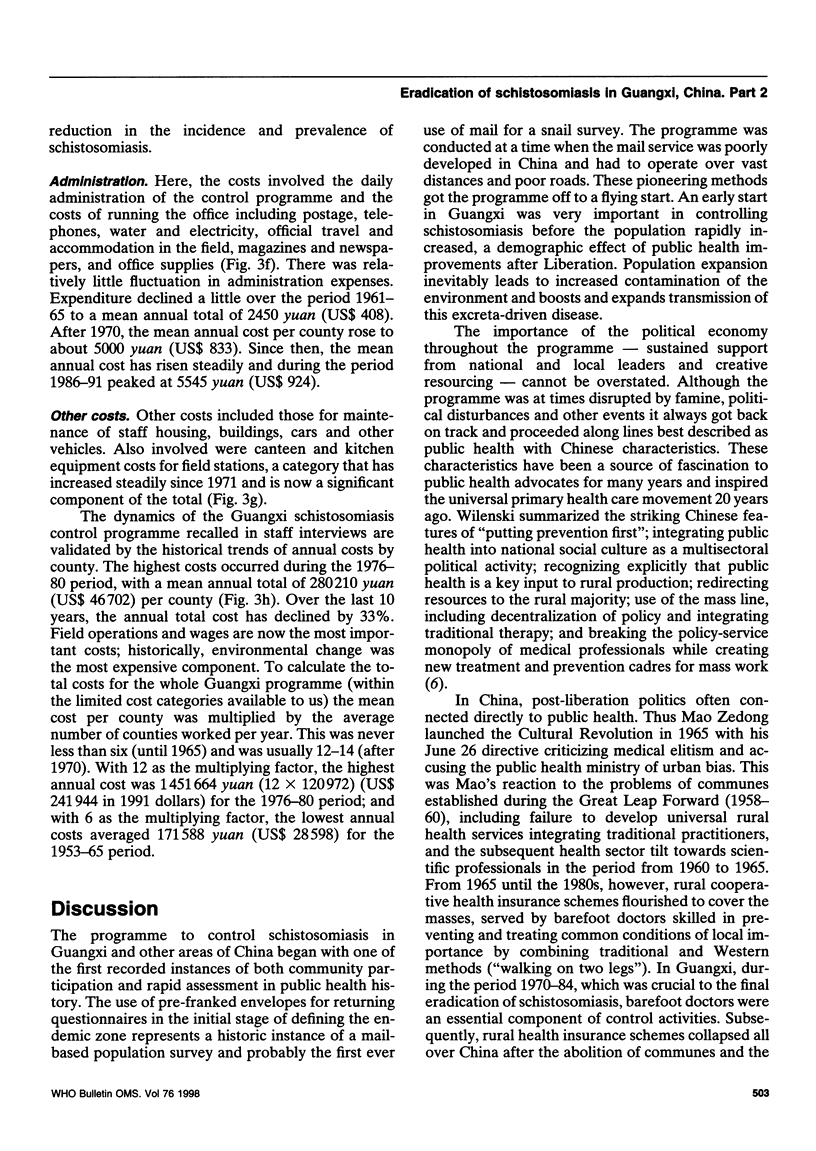
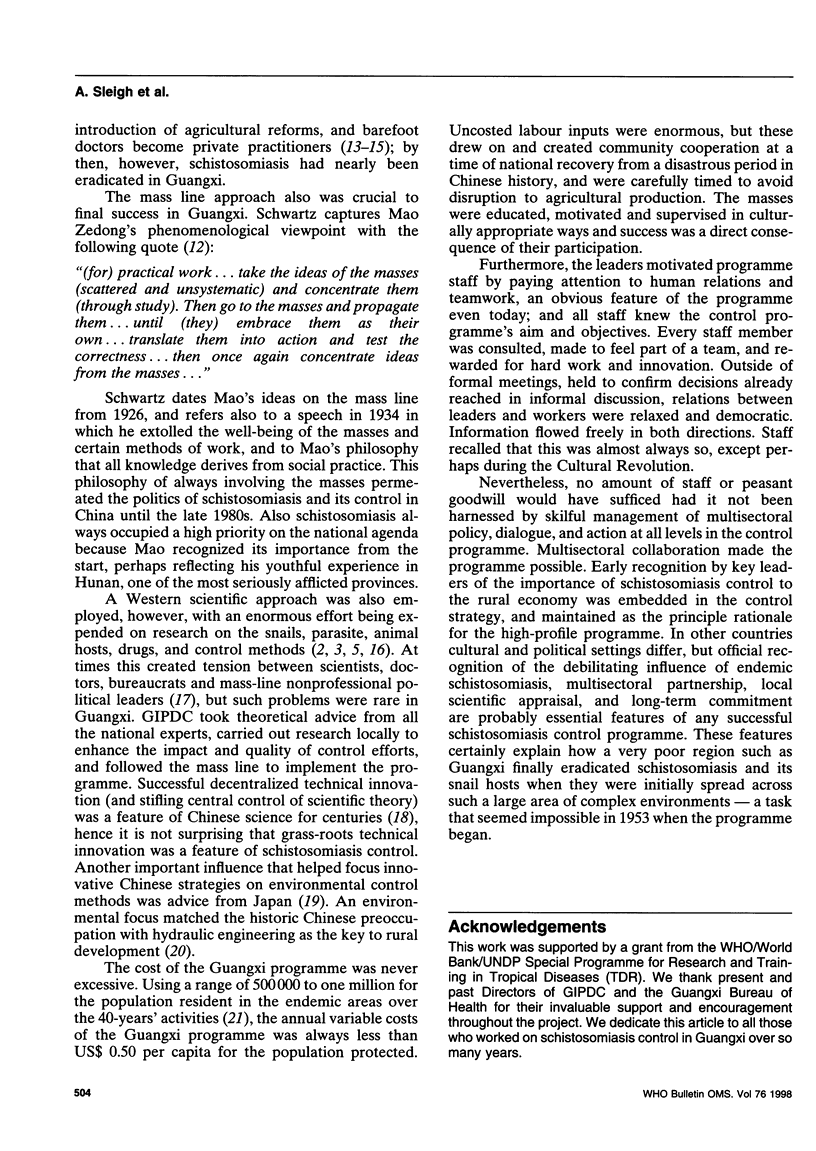
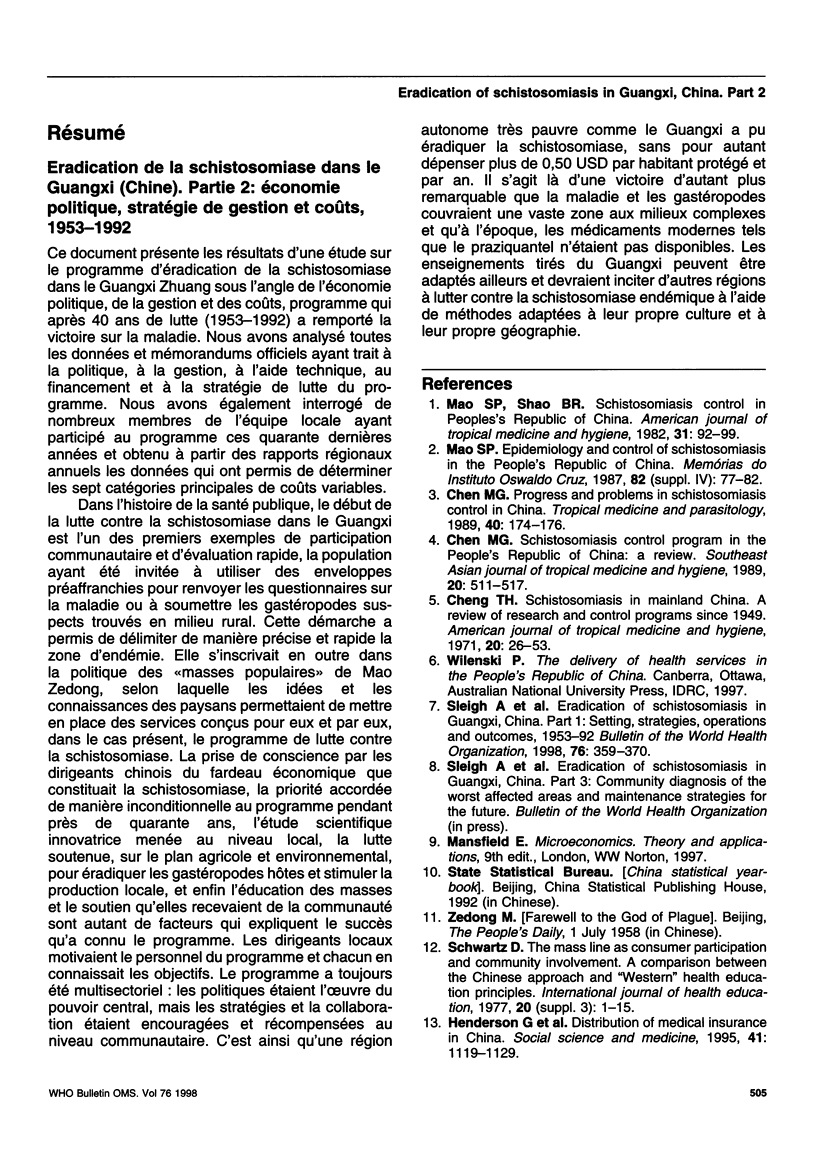
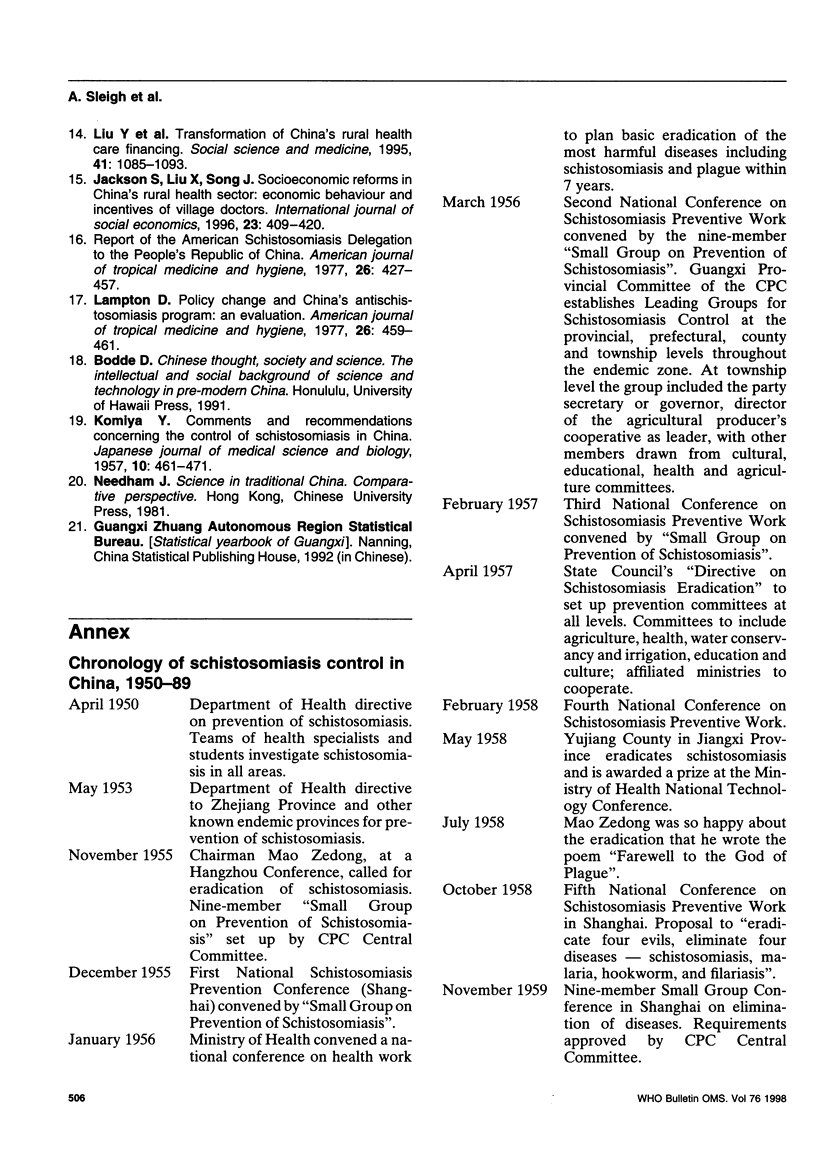

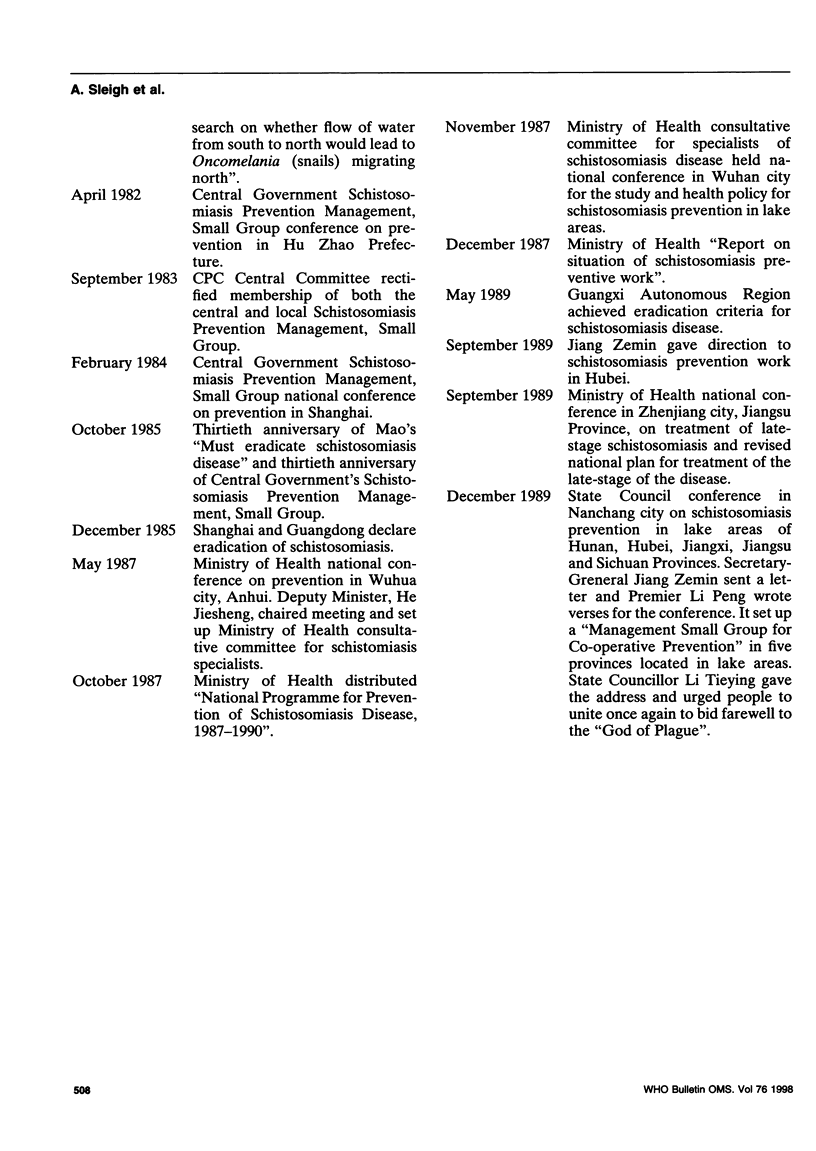
Images in this article
Selected References
These references are in PubMed. This may not be the complete list of references from this article.
- Chen M. G. Progress and problems in schistosomiasis control in China. Trop Med Parasitol. 1989 Jun;40(2):174–176. [PubMed] [Google Scholar]
- Chen M. G. Schistosomiasis control program in the People's Republic of China: a review. Southeast Asian J Trop Med Public Health. 1989 Dec;20(4):511–517. [PubMed] [Google Scholar]
- Mao S. P. Epidemiology and control of schistosomiasis in the People's Republic of China. Mem Inst Oswaldo Cruz. 1987;82 (Suppl 4):77–82. doi: 10.1590/s0074-02761987000800012. [DOI] [PubMed] [Google Scholar]
- Mao S. P., Shao B. R. Schistosomiasis control in the people's Republic of China. Am J Trop Med Hyg. 1982 Jan;31(1):92–99. [PubMed] [Google Scholar]
- Schwartz S. D. The mass line as consumer participation and community involvement. A comparison between the Chinese approach and "Western" health education principles. Int J Health Educ. 1977 Jul-Sep;20(3 Suppl):1–15. [PubMed] [Google Scholar]



